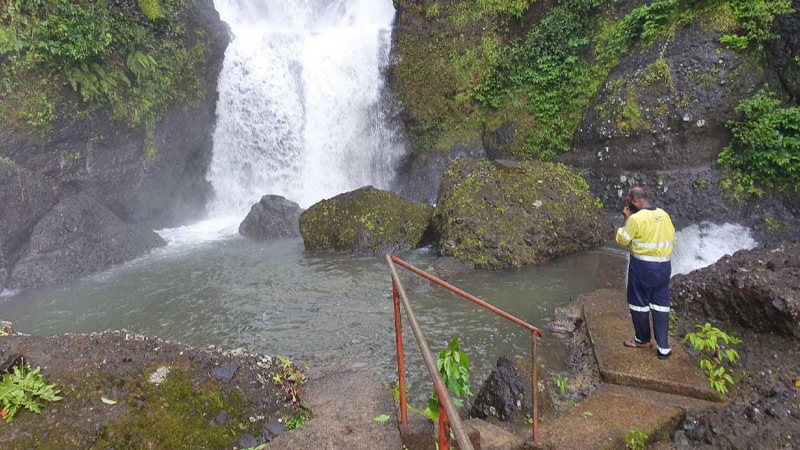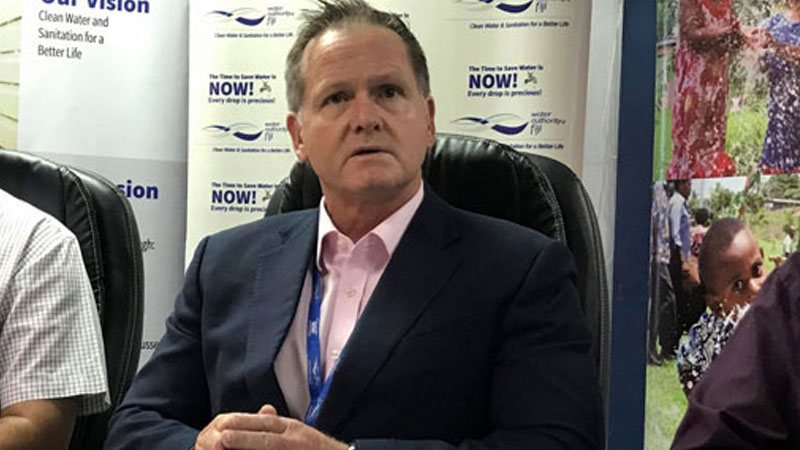
The Water Authority of Fiji is urging people to conserve water as the current ‘drought’ and excessive water usage are causing supply issues and a drop in water levels.
The growing population demands in different parts of the country also requires adequate infrastructure upgrades.
WAF CEO, Barry Omundson says this is a very serious problem as the dry season has not only caused a reduction in inflow. He says it also decreases the quality of raw water received by their treatment plants further affecting their production capabilities.
Omundson says while they are taking all possible measures, such as the temporary installation of sandbags along the Waimanu River to prevent drops in water level and prioritising repairs to reduce any leakage, this will not be effective unless everyone does their part and uses water wisely.
The Tamavua Water Plant, which supplies water to 40 percent of the Suva area, has been experiencing algae blooms due to the low water intake requiring ‘backwashing’ (flushing and re-flushing through filters).
He says this extra filtration to ensure the water is safe, slows down entry into the systems which then can’t keep up with demand.
 [Nasealevu Dam now]
[Nasealevu Dam now]
The CEO also says both the Waila and Tamavua Water Treatment plants in Suva are producing water beyond their design capacity due to the increase in demand from customers and are further unable to sustain “Peak Day Demand”.
He says this design capacity and the growing population between Nausori and Suva is why the government has invested heavily into future proofing this region with the Rewa Water Supply Project currently under construction that will boost supply and alleviate the current constraints.
Omundson says the effect on WAF systems are already being felt, resulting in water disruptions to many areas, and he urges all Fijians to conserve water if we want to keep the number of disruptions down.

In the Western Division, current conditions have resulted in a low inflow of raw water from the Vaturu Dam to the Nagado Water Treatment Plant.
This dam is the main raw water intake or water source for the whole of the Nadi system and 70 per cent of Lautoka with approximately 45,000 residents dependent on it.
Omundson says they are seeing depleting levels in the Vaturu Dam which is currently at 524.890 metres above mean sea level. The safe water levels at the Vaturu Dam is 527 metres while the critical level is below 522 metres.
He says to alleviate this issue in the future, WAF is currently seeking to work with international partners in the feasibility of an additional water source in our western division.
The Northern Division has had similar issues with Nasealevu which serves as one of the water sources for Labasa seeing depleted levels and Taveuni has also been affected by the dry weather.
Taveuni’s Mua system currently requires WAF to conduct valve operations at night to allow for elevated areas to receive tap water.
Omundson also cautioned against thinking that the occasional rainfall would solve the issue.
He says they require rain in specific areas where catchments are located, to improve source yield.
The Authority urges Fijians to minimise usage, particularly commercial car washes, as well as the watering of gardens and compounds.
WAF says people should always store sufficient amounts of water to last for at least two to three days in their homes at all times.
Stay tuned for the latest news on our radio stations


